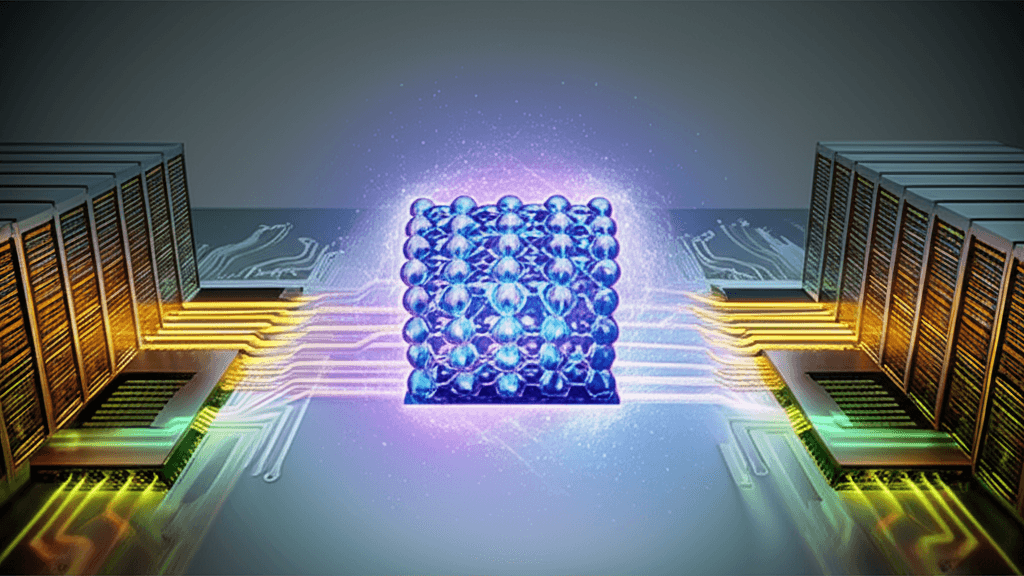IBM and AMD Unite Quantum and Supercomputing for AI Breakthroughs
This unprecedented collaboration fuses quantum and classical systems, promising breakthroughs in AI, science, and the quest for fault-tolerant computing.
August 27, 2025

In a landmark move poised to reshape the landscape of high-performance computing, technology giants IBM and AMD have announced a strategic partnership to develop next-generation systems that merge quantum computers with classical supercomputers.[1][2] This collaboration aims to create a new architecture, dubbed "quantum-centric supercomputing," designed to tackle complex problems currently beyond the reach of even the most powerful conventional machines.[3][4] The initiative will combine IBM's leadership in quantum hardware and software with AMD's dominance in high-performance computing and AI accelerators, fostering a hybrid model where each technology addresses the parts of a problem for which it is best suited.[5][6] For the artificial intelligence industry, this convergence promises to unlock new frontiers in machine learning, optimization, and complex simulations, potentially accelerating breakthroughs in fields from drug discovery to materials science.[7][8]
The core of the collaboration is the development of scalable, open-source platforms that seamlessly integrate IBM's quantum processors with AMD's CPUs, GPUs, and Field-Programmable Gate Arrays (FPGAs).[3][9][10] This hybrid approach is not about replacing classical computers, but augmenting them.[11] In this envisioned architecture, a quantum computer could, for example, simulate the intricate behavior of atoms and molecules for a new pharmaceutical compound, a task for which its quantum mechanical nature is ideal.[5][1] Simultaneously, a classical supercomputer powered by AMD's AI accelerators would handle massive data analysis, model training, and other workflow components.[12][2] This division of labor is expected to create a powerful synergy, enabling computational workflows that can solve problems at an unprecedented speed and scale.[4] Both companies bring a formidable track record to the table; IBM has been a pioneer in developing increasingly powerful quantum computers, while AMD's technology powers the two fastest supercomputers in the world, Frontier and El Capitan.[3][7][12]
A central technical goal of the partnership is to advance progress toward fault-tolerant quantum computing, a long-standing hurdle in the field.[13][14] Quantum computers are notoriously susceptible to errors from environmental "noise," which can corrupt calculations.[15] The collaboration will explore using AMD's advanced hardware for real-time error correction, a critical component for building stable and reliable quantum systems.[9][1][16] This is a crucial step in fulfilling IBM's vision of delivering a fault-tolerant quantum computer by the end of the decade.[3][17] The companies are not just focused on hardware integration; they also plan to expand the open-source ecosystem around these new systems.[3] A key element of this strategy is the use of platforms like Qiskit, IBM's open-source quantum software development kit, to encourage a global community of researchers and developers to create and adopt new hybrid quantum-classical algorithms.[3][16][18] An initial demonstration of these integrated hybrid workflows is planned for later this year, which will serve as a pivotal milestone for the collaboration.[5][13][19]
The implications of this quantum-classical convergence for the AI industry are profound. Quantum computing has the potential to revolutionize machine learning by processing vast datasets and exploring complex solution spaces far more efficiently than classical computers.[20] This could dramatically reduce the time needed to train sophisticated AI models and solve complex optimization problems common in logistics, finance, and industrial design.[5][21] The IBM-AMD partnership aims to build the unified infrastructure needed to make this a reality, allowing organizations to run classical AI acceleration on AMD Instinct processors while seamlessly integrating quantum algorithms for specific tasks.[20] By leveraging AMD's strength in AI chips and IBM's watsonx AI platform, the collaboration will create a powerful, integrated environment for developing and deploying next-generation AI applications that can harness the advantages of both computational paradigms.[20][22][11]
In conclusion, the alliance between IBM and AMD marks a strategic and necessary step toward the next era of computation. By pooling their complementary expertise, the two companies are laying the essential groundwork for a future where quantum and classical computing work in concert.[23][11] This quantum-centric model promises not only to accelerate scientific discovery and industrial innovation but also to power new forms of artificial intelligence capable of solving some of the world's most pressing challenges.[1][8] While the road to building a truly fault-tolerant, large-scale quantum supercomputer is long and fraught with technical obstacles, this partnership represents a significant escalation in the effort, signaling a future where the boundaries of computing are dramatically expanded.[11][24]
Sources
[3]
[4]
[7]
[8]
[10]
[13]
[14]
[15]
[17]
[18]
[19]
[20]
[22]
[23]
[24]